Choosing the right 3D scanner can be tricky, especially when comparing Apple’s built-in TrueDepth and LiDAR sensors with the professional-grade Structure Sensor 3. While all three scanners capture depth data, they work in very different ways. In this guide, we’ll compare TrueDepth vs LiDAR vs Structure Sensor 3, break down their strengths and weaknesses, and help you decide which scanner is best for your workflow, whether that’s body scanning, AR, or precision 3D modeling. Or, use our Table Comparison. You can use all of these three scanning types on our iOS based application, Structure Capture.
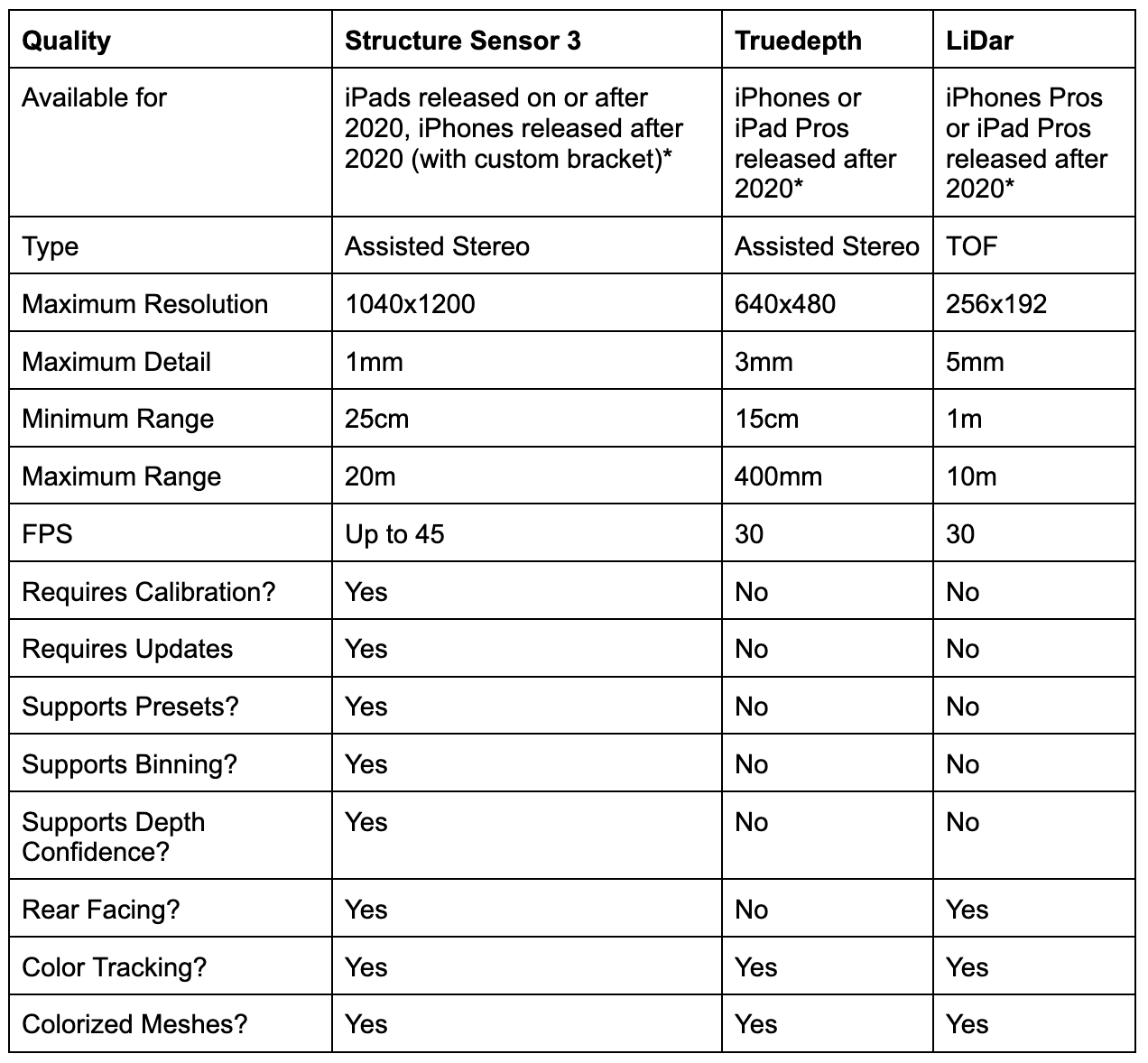
LiDar
Available On:
- iPad Pro
- iPhone Pro
How It Works
LiDar on Apple Devices is a TOF (Time Of Flight) sensor, which means it works by firing lasers at the scanning target and determining distance by measuring how long it takes for the light to hit a detection plate.
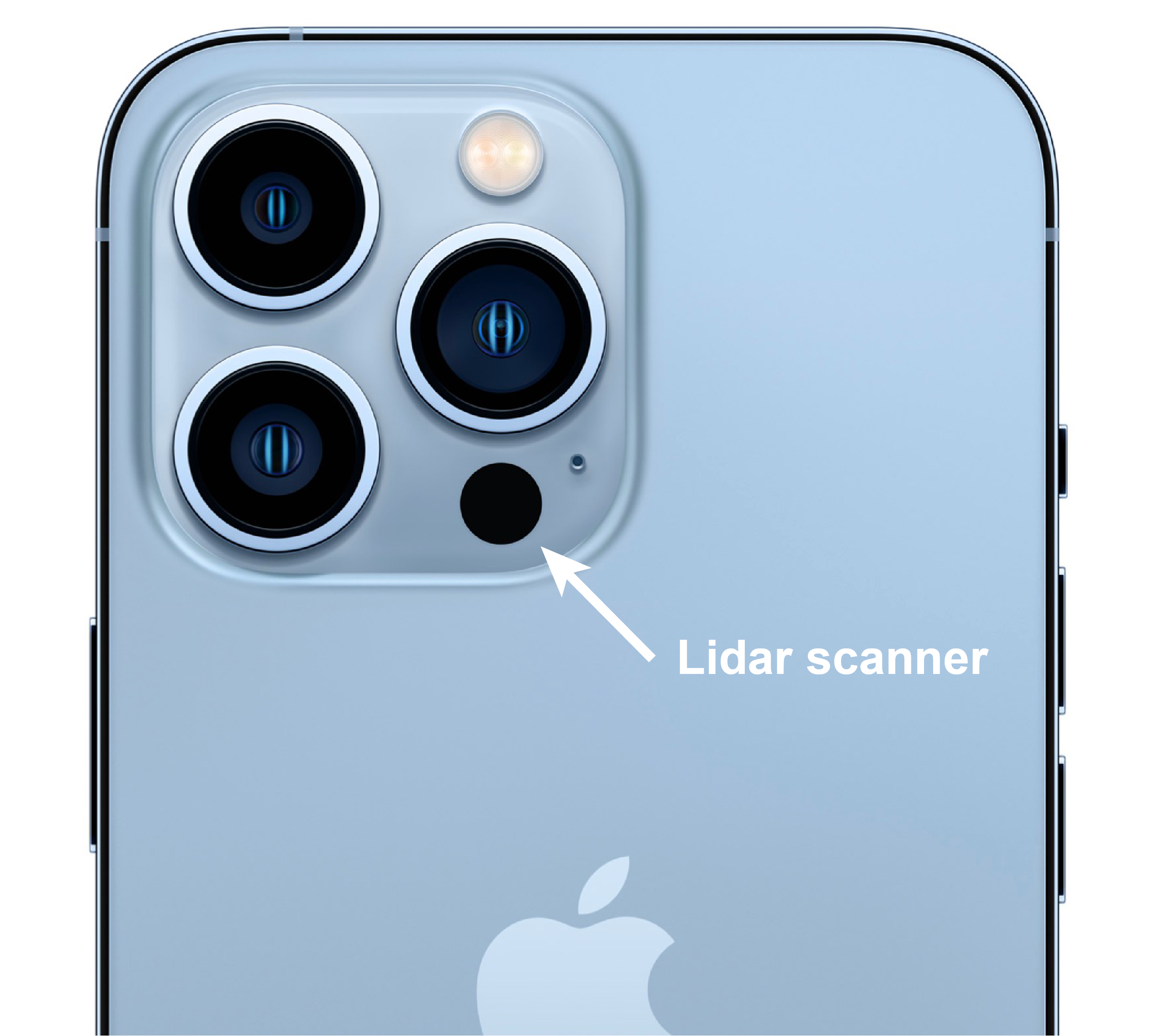
Pros
LiDar is very resistant to environmental interference, like fog, or the sun. This means that your small liDar sensor can scan rooms quickly and easily.. More importantly, liDar’s ability to cut through noise makes it a great choice for navigation or AR (Augmented Reality).
Cons
LiDar is the least accurate of all available options, because of how quickly light moves, and how short the span of time being measured is. Furthermore, Apple enforces a minimum of 1 meter minimum distance limits resolution to 256x192 pixels. The low resolution, combined with the minimum distance, makes tracking against small objects very difficult for the LiDar Sensor.
Best Use
AR, scanning large spaces or furniture, scanning where speed and resilience to noise is more important than accuracy or detail.
Not Recommended For
Scanning feet, hands, or heads, scanning accurately or at high detail, scanning at close range.
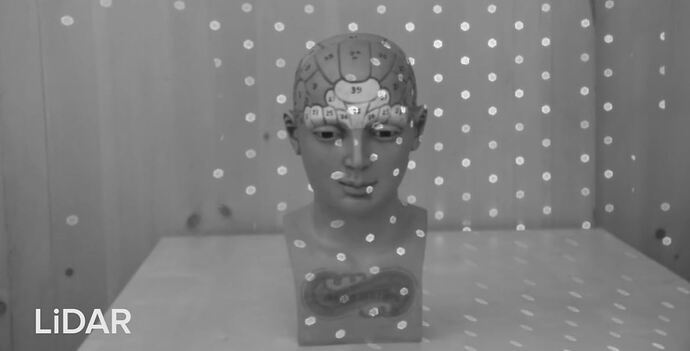
Apple TrueDepth
How It Works
Apple TrueDepth is a stereo assisted sensor, which means that it uses two cameras to pick up IR light and determines distance from the different angles of the two IR cameras (very close to how your own eyes determine distance). The ‘assisted’ part of ‘stereo assisted’ means that the cameras get additional light from an IR project, which shines dots of IR light on the target.

Pros
TrueDepth is both accurate and fast. With a resolution of 640x480, it is detailed enough for many types of body scans, and is well suited to desktop objects. Since Apple uses this sensor for FaceID authentication, the TrueDepth sensor was built for scanning very close to a target, with a phenomenal minimum range of 15cm (Almost 6 inches!).
The reason that TrueDepth can offer so much is its significantly denser projection field. As you can see in the image below, the projector offers many times more dots than liDar solution, improving both tracking and detail capture for small objects.
Cons
While the TrueDepth Sensor boasts a maximum range of 400mm, in practice, accuracy will fall off dramatically after 30 cm distance from the target (about 11 inches). Furthermore, the sensor is always placed on the front of the phone, because its primary purpose (as far as Apple is concerned) is to authenticate the user with FaceID. This can cause difficulties when scanning around targets as the operator can’t see the screen. To get around this, developers can use haptic feedback and sound to inform the user of scan quality and instruct the user how to correct their position. Alternatively, you can find mirrors for the TrueDepth sensor, but it is important to note that these mirrors may add distortion to the scans.
Best Use
Scanning heads or plantar surfaces, small desktop objects, scanning body parts where scanning close to the object is acceptable, and scanning small desktop objects.
Not Recommended For
Scanning large objects (larger than a human torso) or complex, irregularly shaped objects (antlers), scanning where video feedback is required.
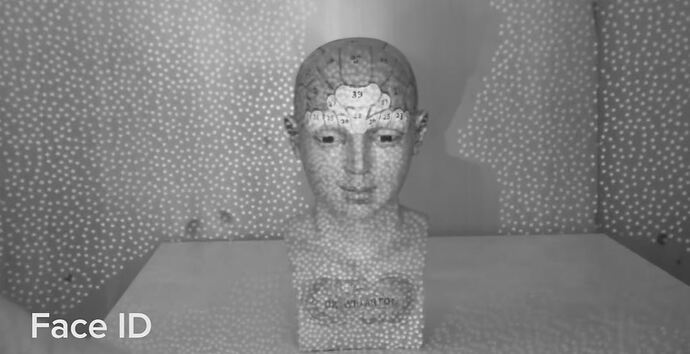
Structure Sensor 3
How It Works
The Structure Sensor is a Stereo Assisted Scanner, similar to the TrueDepth Scanner, but with larger cameras and a much more powerful projector. The projector uses 940nm IR light, making the sensor more resistant to light noise than traditional 840nm projectors. The Structure Sensor also comes equipped with its own controlling chip as well as its own battery, allowing you to scan continuously for several hours.
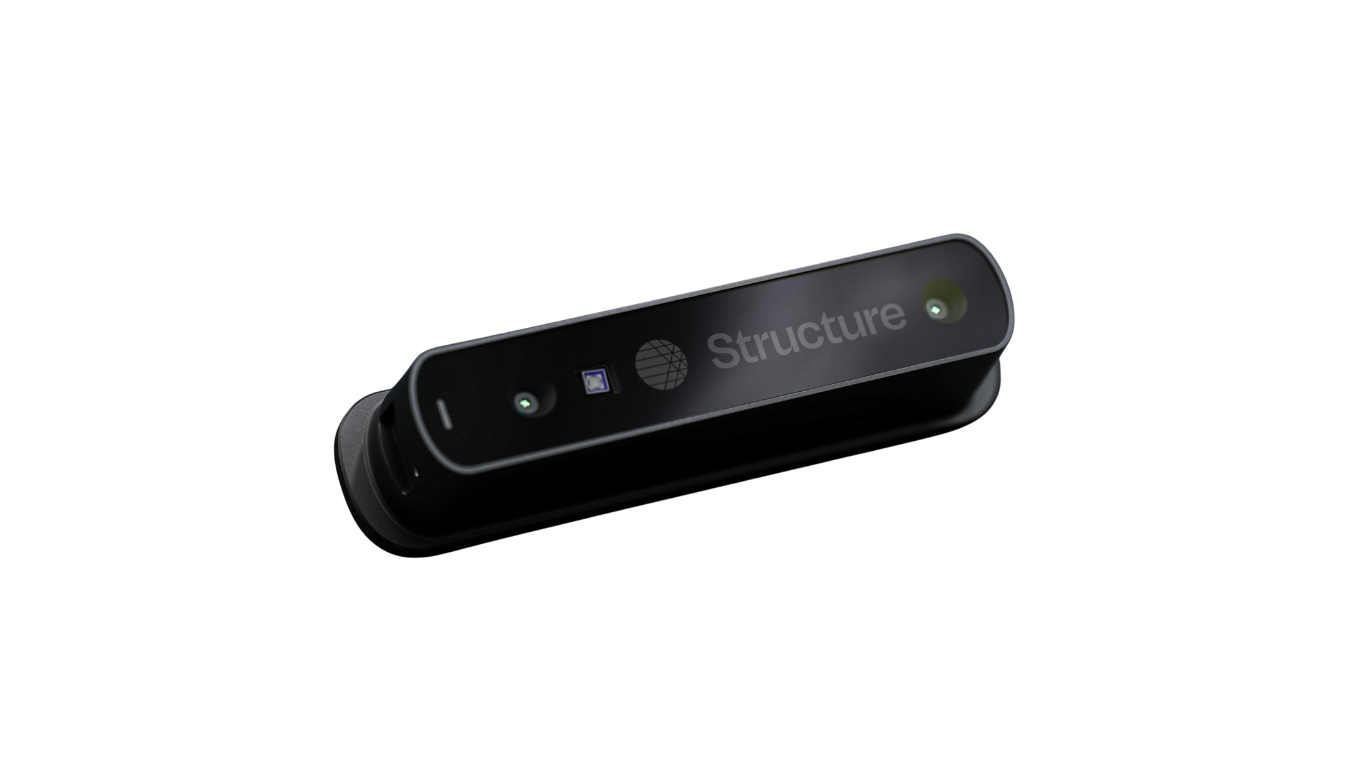
Pros
Of the three sensors presented here, The Structure Sensor has superior accuracy, detail, tracking, ease of use. With the power of the Structure Sensor, you can easily scan both large and small objects, with detail down to 1mm, and resolutions up to 1040x1200. And because the Structure Sensor is designed by Structure, we could add in unique features like depth confidence - a machine learning tool that automatically removes low quality pixels from a mesh - and binning - a tool for compressing meshes in real time, speeding Frames per second up to as high as 45 and dramatically improving tracking.
Cons
The Structure Sensor is its own separate accessory, meaning that it must be purchased separately, then attached to the iPad with the correct bracket. In addition, the Sensor needs to be updated with new firmware periodically, and if you want to use color tracking, the device needs to be calibrated with the calibrator app. The scanner also has a minimum range of 25cm, considerably less than TrueDepth, and while the scanner has a maximum range of 5m, the sensor was not optimized for large areas, especially in direct sunlight.
Best Use
Scanning the human body, scanning objects in size ranging from a water bottle all the way to a bookshelf, Scanning complicated shapes or objects requiring high precision.
Not Recommended For
Scans where sub millimeter accuracy is required, outdoor scanning in direct sunlight, scanning large areas, scanning objects smaller than a coffee cup.
Closing Thoughts
If you need the best performance, the Structure Sensor 3 is your best option. However, if you need an onboard scanner, either to keep costs down or to simplify your use case, the TrueDepth Scanner provides the best accuracy and tracking for small objects, and LiDar is the best sensor for large objects or for scanning at range.
* While iPhones or iPads before 2020 used TrueDepth or LiDar sensors, the Structure SDK is tested on devices made no earlier than 2020. Structure Sensor 3, TrueDepth, or LiDar may function with earlier phones or iPads, but performance can’t be guaranteed.